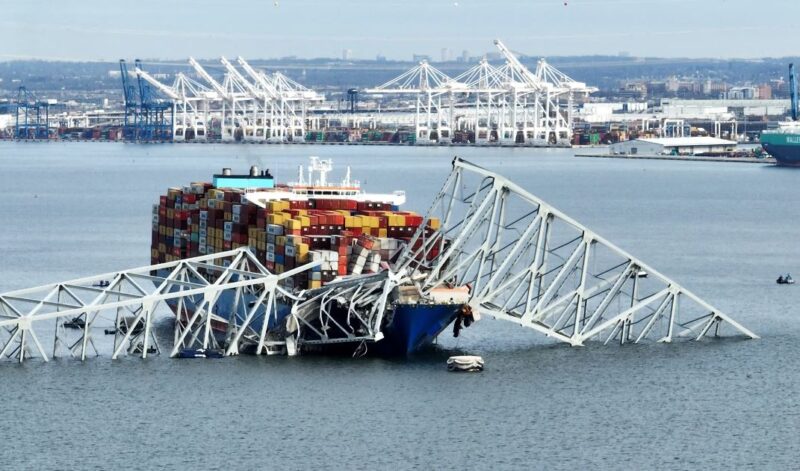
On Thursday, the U.S. Department of Transportation’s Federal Highway Administration (FHWA) announced it was making $60 million available immediately for the Maryland Department of Transportation for repairs to the Francis Scott Key Bridge in Baltimore.
The bridge collapsed on March 26 after being hit by a 1,000-foot long cargo container ship. The $60 million is considered “quick release” Emergency Relief (ER) funds, and will serve as a down payment toward initial costs list emergency repairs, design and bridge reconstruction, officials said. Additional Emergency Relief program funding will be made available as the need arises, officials said.
“No one will ever forget the shocking images of a container vessel striking the Francis Scott Key Bridge, causing its collapse and the tragic loss of six people,” U.S. Transportation Secretary Pete Buttigieg said. “The federal emergency funds we’re releasing today will help Maryland begin urgent work, to be followed by further resources as recovery and rebuilding efforts progress. President Biden has been clear: the federal government will do everything it takes to help rebuild the bridge and get the Port of Baltimore back open.”
The FHWA’s Emergency Relief program provides funds for highways and bridges damaged by natural disasters or catastrophic events. The “quick release” Emergency Relief funds for states, territories, tribes and Federal Land Management Agencies are designed to help restore essential transportation. Additional funds will be needed to rebuild the bridge, officials said, and will be supported by the Emergency Relief program through nationwide funding allocations.
“We are supporting President Biden’s whole-of-government response to this tragic incident and the federal government is committed to providing all necessary resources to rebuild the bridge,” Federal Highway Administrator Shailen Bhatt said. “The Emergency Relief funding announced today provides an initial down payment of funds to help Maryland manage ongoing disruptions to traffic, supply chains, and daily life, and is the first step in our joint efforts to reconstruct the Francis Scott Key Bridge.”